28/Feb/Mon
Basic concept
- CPU-I/O Burst Cycle
- Process execution consists of a cycle of CPU execution and I/O wait
- CPU burst followed by I/O burst
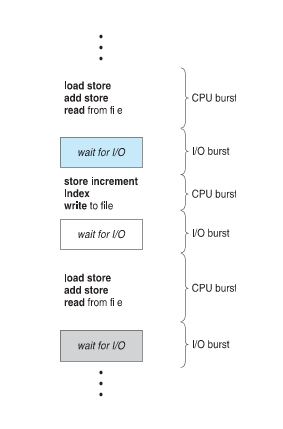
CPU Scheduler and Dispacher
- CPU scheduler
- selects the processes in ready queue, and allocates the CPU to one of them
- Dispacher module
- gives control of the CPU to the process selected by the short-term scheduler
- switching context
- switching to user mode
- jumping to the proper location in the user program to restart that program
Scheduling Criteria
- Max CPU utilization - keep the CPU as busy as posAsible
- Max Throughput - of processes that complete their execution per time unit
- Min Turnaround time - amount of time to execute a particular process
- Min Waiting time - amount of time a process has been waiting in the ready queue
- Min Response time - amount of time it takes from when a request was submitted until the first response is produced, not output (for time-sharing environment)
Scheduler algorithm
First-come, First-Served(FCFS) Scheduling
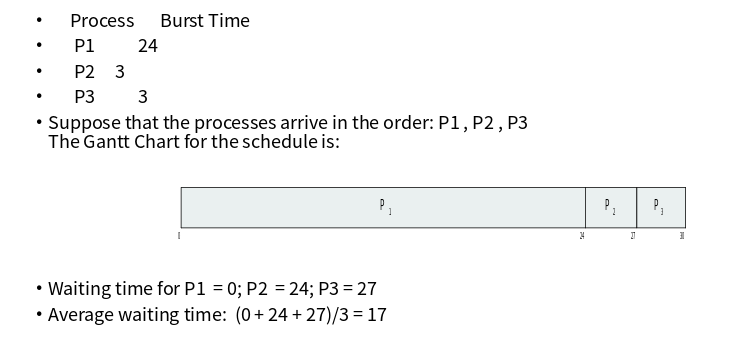
FCFS Scheduling(Cont.)
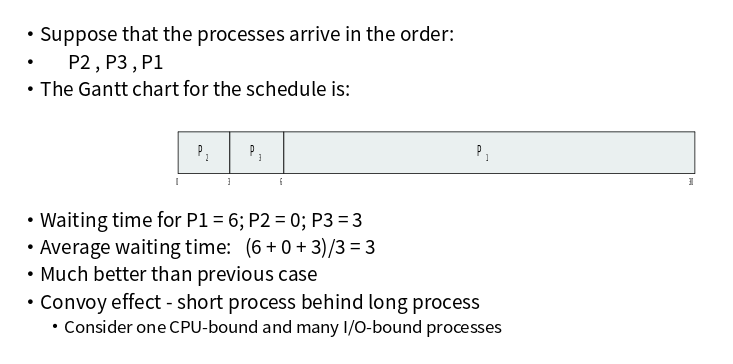
Shotrest-Jon-First (SJF) Scheduling
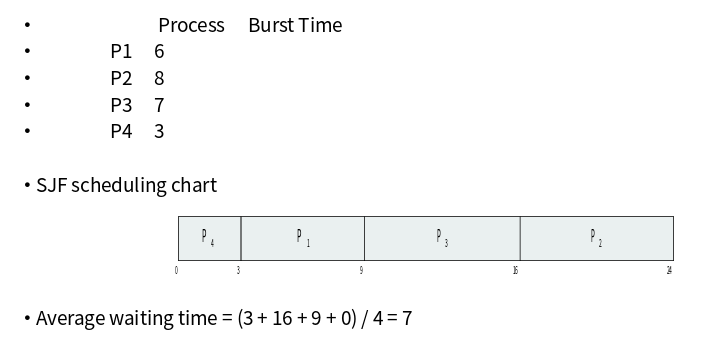
Determining Length of Next CPU Burst
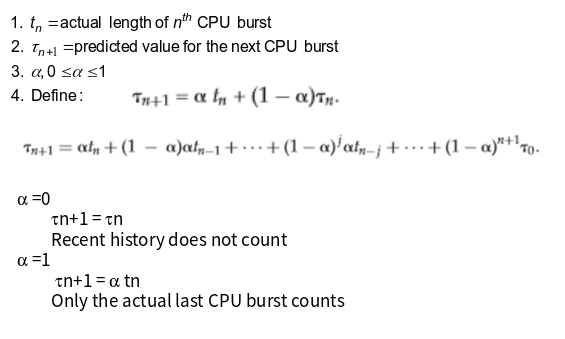
Shortest-remaining-time-first
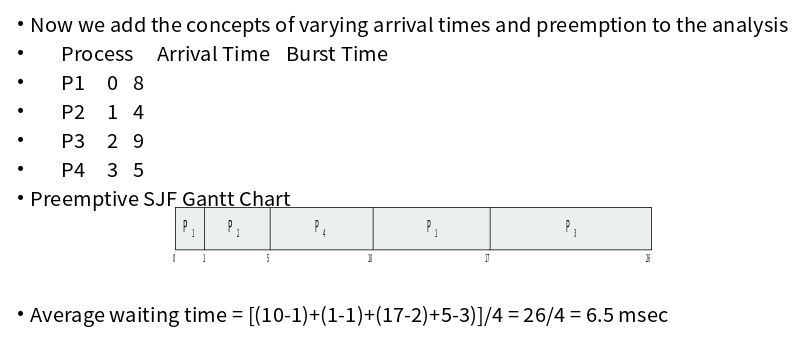
Priority Scheduling
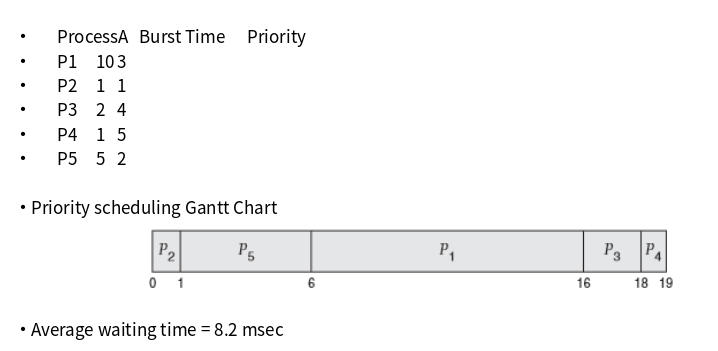
Round Robin(RR)

Multilevel Queue
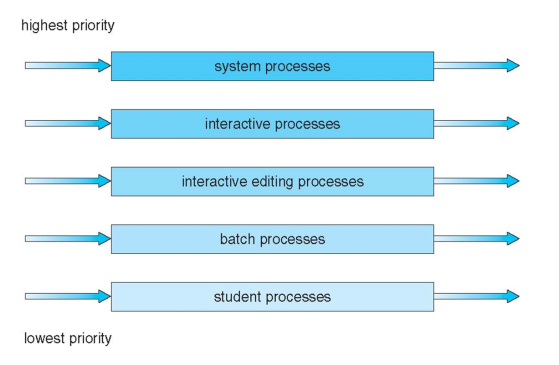
Multilevel Feedback Queue
- A process can move between the various queues; aging can be implemented this way
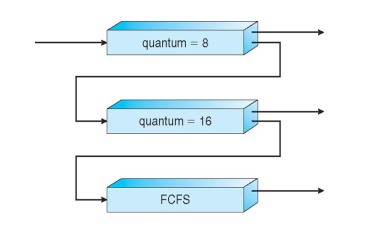
Tread Scheduling
- Thread library schedules user-level threads to run on LWP
- process-contention scope(PCS)
- priority set by programer
PTHREAD_SCOPE_PROCESSschedules threads using PCS scheduling
- Kernel thread scheduled on CPU
- System contention scop (SCS)
PTHREAD_SCOPE_SYSTEMschedules threads using SCS schedulingPthread Scheduling API
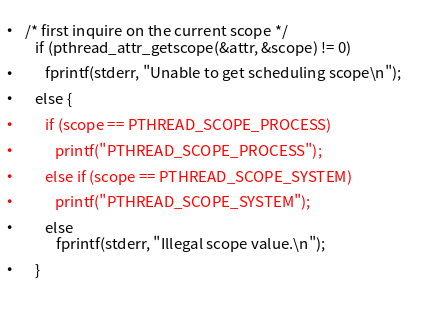
Multipli-Processor Scheduling
- Asymmetric multiprocessing
- Symmetric multprocessing (SMP)
- Processor affinity
- Load Balancing
- Push migration
- Pull migration
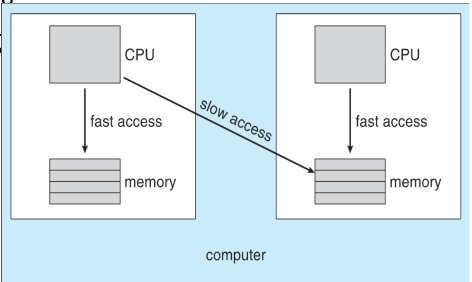
Multicore Processors
- Multiple processor cores on same physical chip
- Multiple threads per core also growing
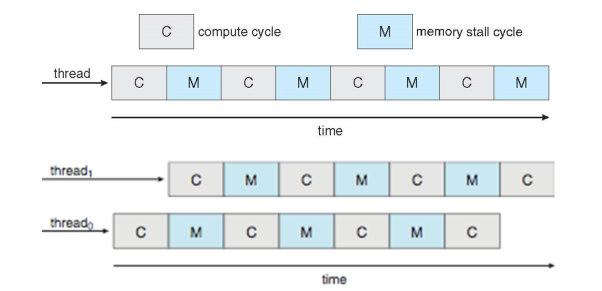
essing
- Symmetric multprocessing (SMP)
- Processor affinity
- Load Balancing
- Push migration
- Pull migration
pic
Multicore Processors
- Multiple processor cores on same physical chip
- Multiple threads per core also growing
pic
Real-Time CPU Scheduling
- Soft real-time systems/ Hard real-time systems
- Interrupt latency pic
- Dispatch latency
pic
Priority-based Scheduling
- For real-time scheduling, scheduler must support preemptive, priority-based scheduling
- But only guarantees soft real-time
- Processes have new characteristics: periodic ones require CPU at constant intervals
- pic
pic
Rate Montonic Scheduling
- pic
pic
- A priority is assigned based on the inverse of its period
- Shorter periods = higher pority;
- Longer periods = lower priority
- P1 is assigned a higer priority than P2.
pic
Missed Deadlines with Rate Monotonic Scheduling
Earliest Deadline First Scheduling (EDF)
- Priorities are assigned according to deadlines:
- the earlier the deadline, the higher the priority;
- the later the deadline, the lower the priorty
pic
Proportional Share Scheduling
- T shares are allocated among all processes in the system
- An application receives N shares where N
<T - This ensures each application will receive N/T of the to the total processor time
Algorithm Evaluation
- Deterministic modeling
- Consider 5 processes arriving at time 0; pics
Queueing Models
- Describes the arrival of processed, and CPU and I/O bursts probalilistically
- n = average queue length
- W = average waiting time in queue
- λ = average arrival rate into queue
- Little's law - in steady state, processed leaving queue must equal processes arriving, thus: n = λ x W
- For example, if on average 7 processes arrive per second, and normally 14 processes in queue, the average wait time per process = 2 ceconds
Simulations
picImplementatioin
- Just implement new scheduler and test in real systems
- High cost, high risk
- Environments vary
- Most flexible schedulers can be modified per-site or per-system or APIs to modify priorities
- But again environments vary
Real-Time CPU Scheduling
- But again environments vary
- Soft real-time systems/ Hard real-time systems
- Interrupt latency
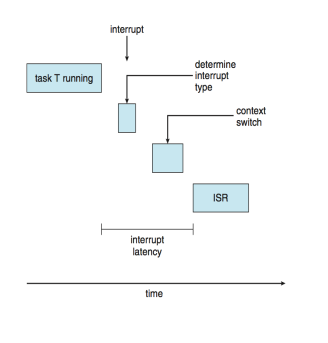
- Dispatch latency
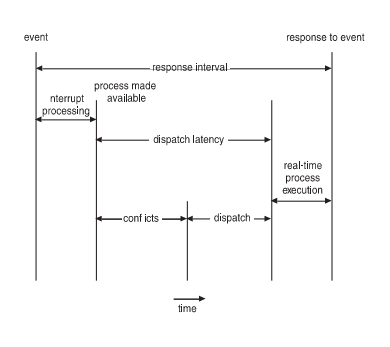
Priority-based Scheduling
- For real-time scheduling, scheduler must support preemptive, priority-based scheduling
- But only guarantees soft real-time
- Processes have new characteristics: periodic ones require CPU at constant intervals

Rate Montonic Scheduling
- A priority is assigned based on the inverse of its period
- Shorter periods = higher pority;
- Longer periods = lower priority
- P1 is assigned a higer priority than P2.

Missed Deadlines with Rate Monotonic Scheduling

Earliest Deadline First Scheduling (EDF)
- Priorities are assigned according to deadlines:
- the earlier the deadline, the higher the priority;
- the later the deadline, the lower the priorty

Proportional Share Scheduling
- T shares are allocated among all processes in the system
- An application receives N shares where N
<T - This ensures each application will receive N/T of the to the total processor time
Algorithm Evaluation
- Deterministic modeling
- Consider 5 processes arriving at time 0;

Queueing Models
- Describes the arrival of processed, and CPU and I/O bursts probalilistically
- n = average queue length
- W = average waiting time in queue
- λ = average arrival rate into queue
- Little's law - in steady state, processed leaving queue must equal processes arriving, thus: n = λ x W
- For example, if on average 7 processes arrive per second, and normally 14 processes in queue, the average wait time per process = 2 ceconds
Simulations
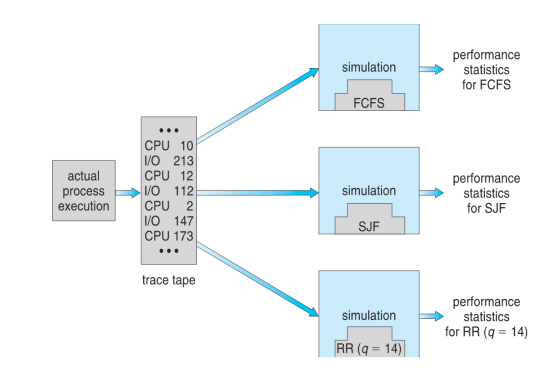
Implementatioin
- Just implement new scheduler and test in real systems
- High cost, high risk
- Environments vary
- Most flexible schedulers can be modified per-site or per-system or APIs to modify priorities
- But again environments vary